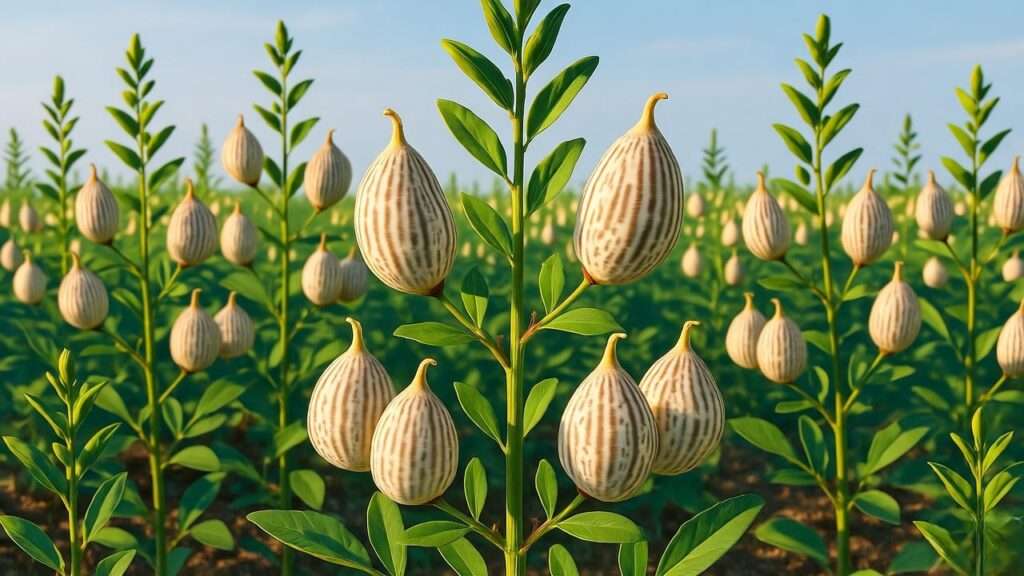Imagine harvesting your own nutty, golden sesame seeds right from your backyard, ready to sprinkle on salads, stir into recipes, or press into homemade oil! 🌾 Growing a sesame seed plant is not only rewarding but also surprisingly achievable, even for beginners. Whether you’re a home gardener looking to diversify your crops or a plant enthusiast eager to explore this ancient superfood, this guide will walk you through every step to cultivate a thriving sesame seed plant. With its delicate flowers and nutrient-packed seeds, Sesamum indicum is a warm-season gem that’s both ornamental and practical. Backed by years of gardening experience and insights from agricultural research, this comprehensive guide promises actionable tips to ensure your sesame plants flourish. Let’s dig in and unlock the secrets to a bountiful sesame harvest! 🥄
1. Understanding the Sesame Seed Plant 🌾
1.1 What Is a Sesame Seed Plant? 🌱
The sesame seed plant, scientifically known as Sesamum indicum, is an annual herb cherished for its tiny, nutrient-dense seeds. Originating in Africa and widely cultivated in Asia, this warm-climate crop grows 2-4 feet tall, adorned with tubular white or pink flowers that develop into seed-filled pods. 🌸 Sesame is a staple in global cuisines, from tahini in Middle Eastern dishes to garnishes in Asian recipes. Beyond its culinary uses, the plant’s lush foliage and delicate blooms add aesthetic charm to gardens. Its seeds are rich in healthy fats, protein, and antioxidants, making it a superfood worth growing at home.
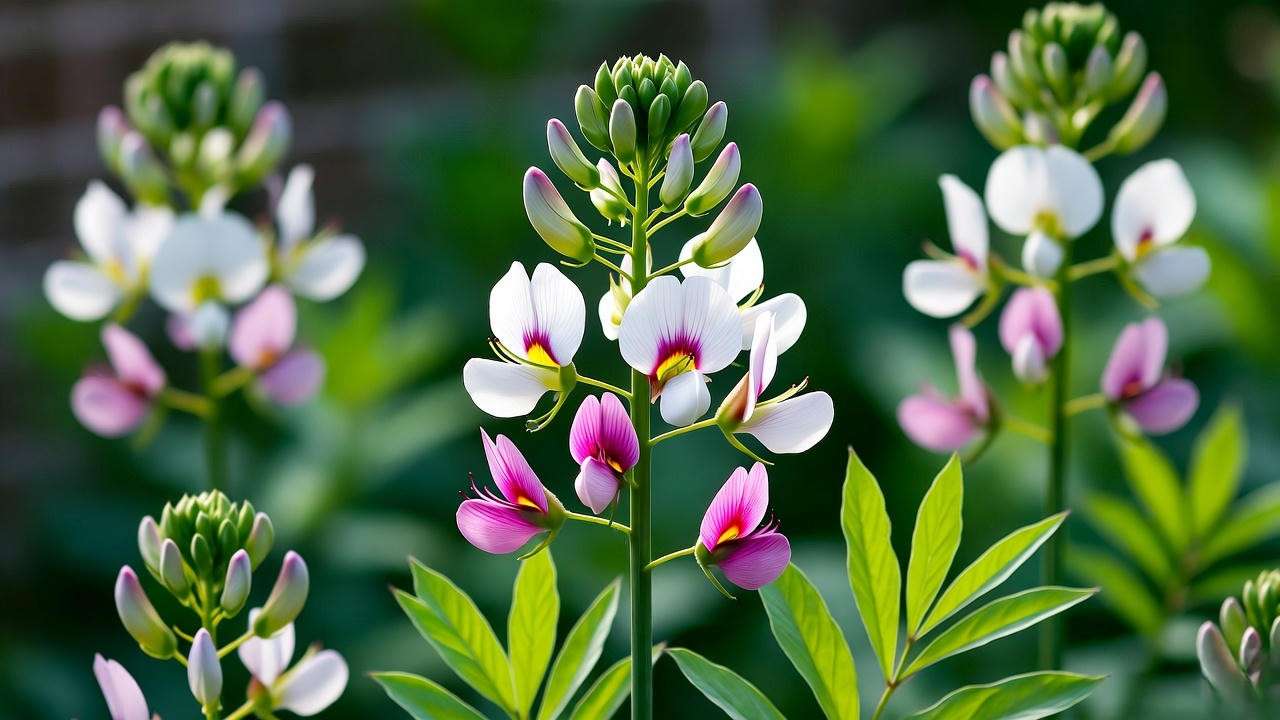
1.2 Ideal Growing Conditions for Sesame Seed Plants ☀️
Sesame thrives in warm, sunny climates, ideally in USDA hardiness zones 9-11. It loves temperatures between 70-85°F (21-29°C) and struggles in frost-prone areas. 🌡️ For optimal growth, choose a well-draining, loamy soil with a pH of 5.5-7.5. Sesame demands full sun—6-8 hours daily—to fuel its photosynthesis and seed production. According to research from the University of California Agriculture and Natural Resources, sesame’s drought tolerance makes it suitable for arid regions, but consistent care enhances yields. Ensure your garden or containers provide these conditions to set your sesame plants up for success. 🌞
2. Step-by-Step Guide to Planting Sesame Seeds 🌼
2.1 Choosing the Right Seeds 🌰
Sesame seeds come in white, black, or brown varieties, each with subtle flavor differences. White seeds are common for baking, while black sesame seeds offer a nuttier taste, ideal for Asian dishes. When selecting seeds, opt for organic, non-GMO varieties from trusted suppliers like Baker Creek Heirloom Seeds or local nurseries. 🛒 Check seed packets for freshness, as viability decreases with age. Tip: If you’re new to sesame, start with white sesame seeds for their versatility and ease of germination.
2.2 Preparing Your Garden or Containers 🏡
Sesame adapts well to both in-ground and container gardening. For garden beds, enrich the soil with compost or aged manure to boost nutrients and improve drainage. 🍂 Aim for a loose, loamy texture to prevent waterlogging. For containers, choose pots at least 12 inches deep with drainage holes, filled with a mix of potting soil and perlite. Plant sesame after the last frost, typically in late spring to early summer (May-June in most regions). Use a frost date calculator from sources like the Old Farmer’s Almanac to time your planting. 📅
2.3 Planting Techniques 🌱
Sow sesame seeds ¼ inch deep, spacing them 12-18 inches apart to allow room for growth. Rows should be 2-3 feet apart for in-ground planting. Water lightly after planting to settle the soil. Germination typically occurs within 5-10 days under warm conditions (above 70°F). For visual guidance, imagine a grid: each seed is a point in a checkerboard, ensuring airflow and sunlight access. Example: Create a planting diagram by marking spots with biodegradable stakes to maintain even spacing. This precision promotes healthy development and higher yields.
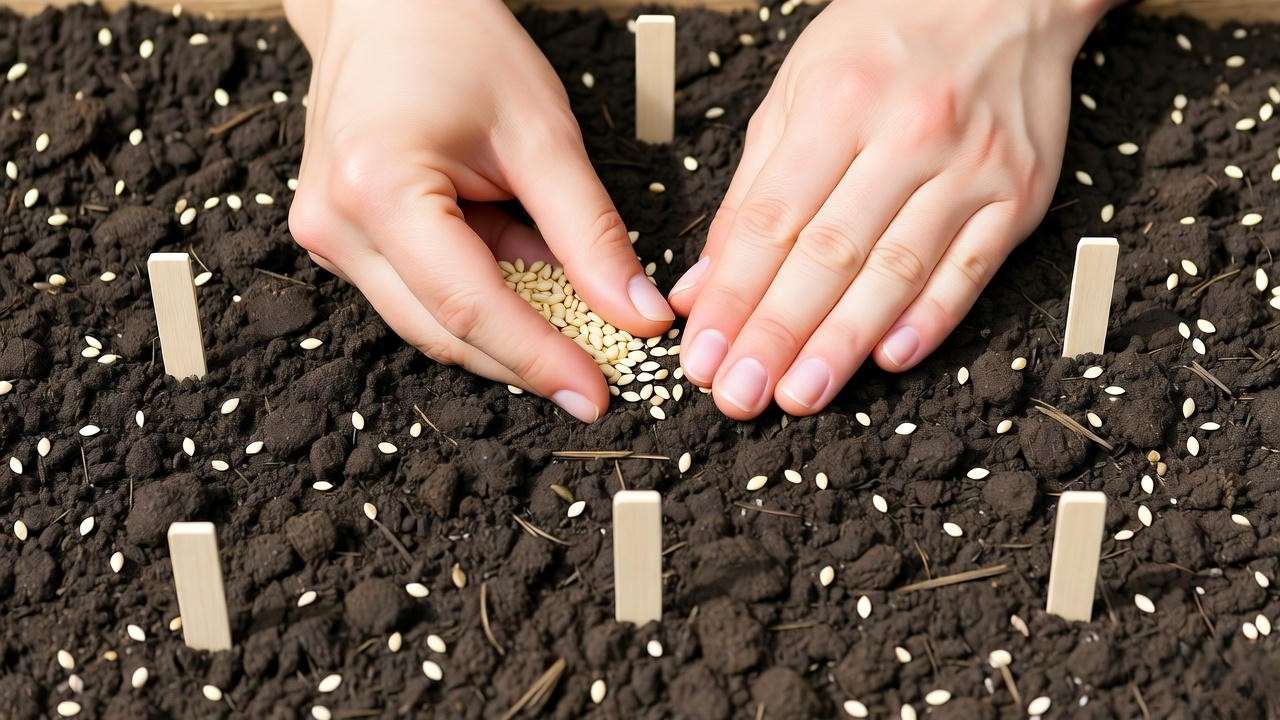
3. Caring for Your Sesame Seed Plant 🌿
3.1 Watering Needs 💧
Sesame plants prefer consistent but moderate watering. Keep the soil moist during germination and early growth, watering every 2-3 days if rainfall is scarce. Once established, sesame’s drought-tolerant nature allows it to thrive with less frequent irrigation—about once a week in dry climates. Avoid overwatering, as soggy soil can lead to root rot. Pro Tip: Install a drip irrigation system to deliver water directly to the roots, minimizing waste and maintaining soil health in hot climates.
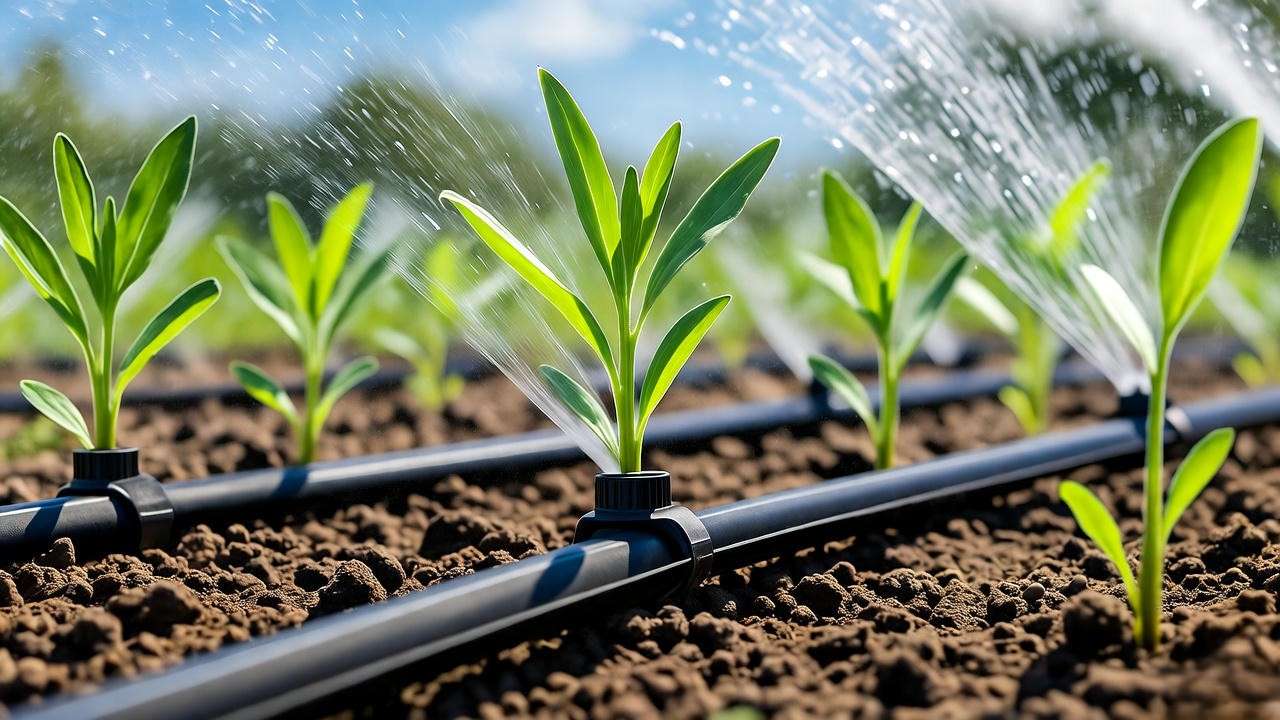
3.2 Fertilizing for Optimal Growth 🌱
Sesame benefits from a balanced fertilizer, such as a 10-10-10 NPK formula, applied at planting, mid-growth (4-6 weeks), and pre-flowering stages. Organic options like fish emulsion or compost tea work well for eco-conscious gardeners. Test your soil with a kit (available at garden centers) to monitor nutrient levels and avoid over-fertilization, which can reduce seed production. Expert Insight: Studies from Texas A&M AgriLife Extension suggest that sesame responds well to nitrogen in early growth but needs phosphorus for pod development.
3.3 Pruning and Maintenance ✂️
Sesame requires minimal pruning but benefits from occasional maintenance. Remove yellowed or dead leaves to improve airflow and reduce pest risks. In windy areas, stake taller plants (over 3 feet) to prevent snapping. Monitor pod development, as overcrowded branches may need thinning to ensure robust seed formation. Regular weeding is crucial, as sesame competes poorly with aggressive weeds. Tip: Hand-pull weeds or use mulch to suppress them, keeping the root zone clear.
4. Common Challenges and Solutions 🐞
4.1 Pests and Diseases 🦟
Sesame plants are relatively hardy but can attract pests like aphids, whiteflies, and leafhoppers. Inspect leaves regularly for sticky residue or tiny insects. Organic controls, such as neem oil or insecticidal soap, are effective and safe. Example: Mix 1 tsp neem oil with 1 quart water and a drop of dish soap for a DIY spray; apply in the evening to avoid leaf burn. Fungal diseases like root rot or leaf spot may occur in overly wet conditions. Ensure proper drainage and avoid overhead watering to prevent these issues.
4.2 Environmental Stressors 🌪️
Sesame can withstand heat and drought but may struggle during prolonged heatwaves or poor soil conditions. Mulch with straw or wood chips to regulate soil temperature and retain moisture. 🍃 If growing in nutrient-poor soil, amend with organic matter before planting. In regions with unexpected cold snaps, use row covers to protect young plants. Tip: Monitor local weather forecasts and adjust care routines to mitigate stress during extreme conditions.
5. Harvesting and Using Sesame Seeds 🌾
5.1 When and How to Harvest ⏰
Timing is critical for harvesting sesame seeds to ensure maximum yield and quality. Sesame pods are ready when they turn brown and begin to split naturally, typically 90-120 days after planting, depending on the variety and climate. 🌞 Look for pods that are dry and slightly open at the tips—a sign the seeds are mature. To harvest, cut the stems at the base using clean, sharp garden shears. Bundle the stems and hang them upside down in a well-ventilated, dry area for 1-2 weeks to fully dry the pods. Pro Tip: Place a paper bag or clean cloth beneath the drying stems to catch seeds that fall as pods split. This method ensures you collect every precious seed without loss. Once dry, gently shake or tap the pods to release the seeds. If pods are stubborn, lightly crush them by hand to extract the seeds.
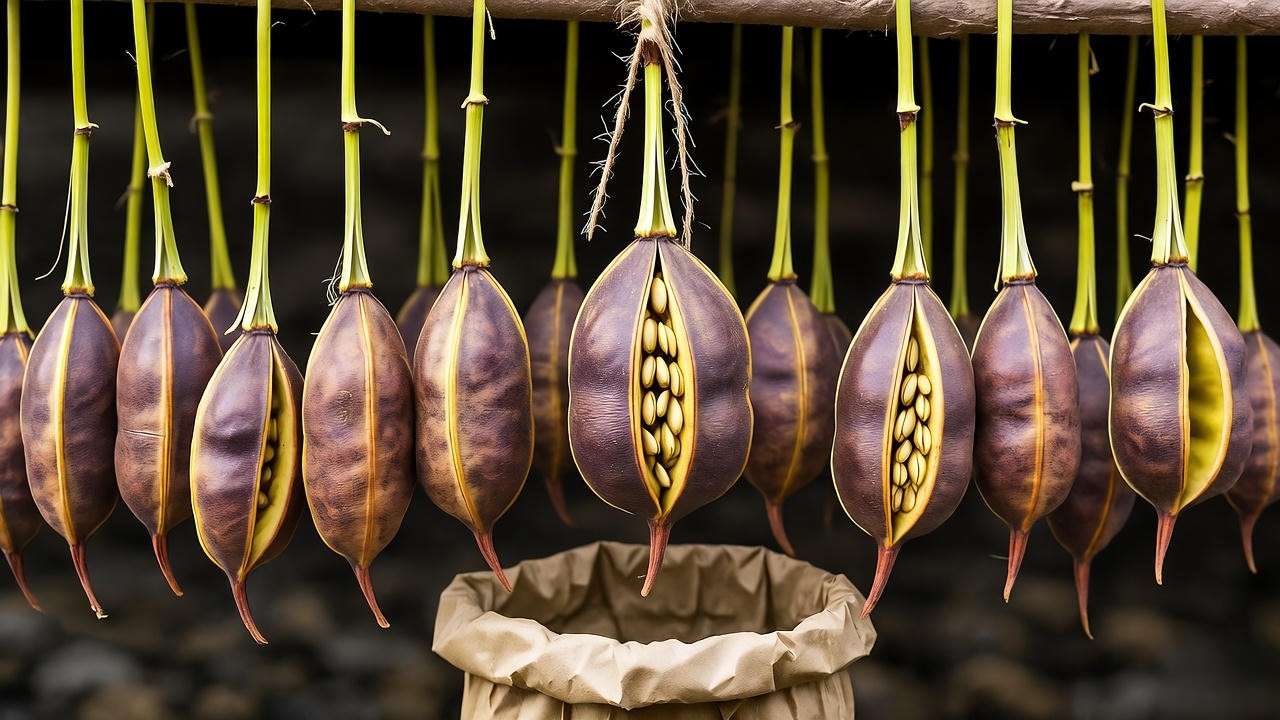
5.2 Storing and Using Your Sesame Seeds 🥄
Proper storage keeps sesame seeds fresh and flavorful for up to a year. Store them in an airtight container, such as a glass jar or resealable bag, in a cool, dry place away from direct sunlight. For longer shelf life, refrigerate the seeds to prevent the natural oils from turning rancid. Sesame seeds are incredibly versatile in the kitchen. Toast them lightly in a dry skillet to enhance their nutty flavor, perfect for sprinkling over salads, stir-fries, or baked goods. You can also grind them into tahini or press them for sesame oil if you have the equipment. Example: Try this simple sesame seed butter recipe: Blend 2 cups of toasted sesame seeds in a food processor with 2-3 tablespoons of neutral oil (like grapeseed) until smooth. Add a pinch of salt for extra flavor. This homemade spread is perfect for toast or as a dip for veggies! 🥗
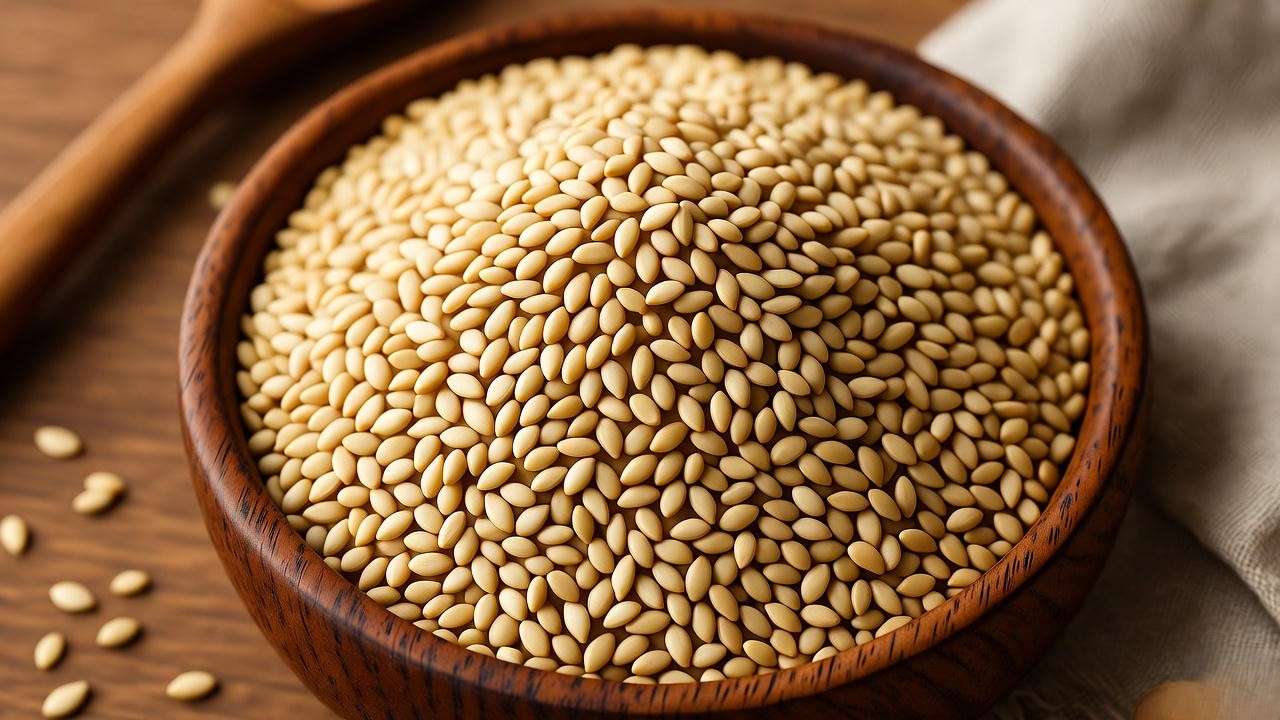
6. Advanced Tips for Maximizing Sesame Yield 🚀
For gardeners aiming to boost their sesame harvest, a few advanced techniques can make a big difference. Incorporate crop rotation to prevent soil nutrient depletion and reduce disease risk. Rotate sesame with legumes like beans or peas, which fix nitrogen in the soil, benefiting future crops. Companion planting is another smart strategy—pair sesame with marigolds or basil to deter pests naturally. 🌼 Succession planting, where you sow seeds every 2-3 weeks, can extend your harvest season, especially in regions with long, warm summers. Expert Insight: Small-scale farmers in sesame-growing regions like India and East Africa often use these methods to achieve consistent yields, as noted in reports from the Food and Agriculture Organization (FAO). Experiment with these techniques to optimize your garden’s productivity and enjoy a steady supply of seeds.
7. FAQs About Growing Sesame Seed Plants ❓
Q1: Can sesame seed plants grow in containers? 🏡
Answer: Absolutely! Sesame adapts well to container gardening, provided you use pots at least 12 inches deep with excellent drainage. Ensure the container receives full sun and use a well-draining potting mix. Check Section 2.2 for detailed container setup tips.
Q2: How long does it take for sesame seeds to mature? ⏰
Answer: Most sesame varieties mature in 90-120 days from planting to harvest. Warm temperatures and proper care can speed up this timeline, while cooler conditions may extend it slightly.
Q3: Are sesame seed plants drought-tolerant? 💧
Answer: Yes, sesame is moderately drought-tolerant once established, making it ideal for arid regions. However, consistent watering during germination and early growth significantly improves seed yield and plant health.
Q4: What are common mistakes to avoid? 🚫
Answer: Common pitfalls include overwatering, planting in poorly drained soil, or sowing seeds too early before the soil warms up. Follow the planting and care guidelines in Sections 2 and 3 to sidestep these issues.
8. Conclusion: Your Path to a Thriving Sesame Seed Plant 🌟
Growing a sesame seed plant is a delightful journey that combines the joy of gardening with the reward of harvesting your own superfood. 🌾 By following this guide—choosing quality seeds, providing optimal growing conditions, and mastering care techniques—you’ll be well on your way to a thriving sesame crop. Whether you’re sprinkling homegrown seeds on your meals or sharing your harvest with friends, the satisfaction of nurturing these plants is unmatched. Start small, experiment with the tips shared here, and don’t be afraid to learn from each season. Have questions or a sesame-growing success story? Share them in the comments below, or try whipping up a batch of sesame seed butter to celebrate your harvest! 🥗

